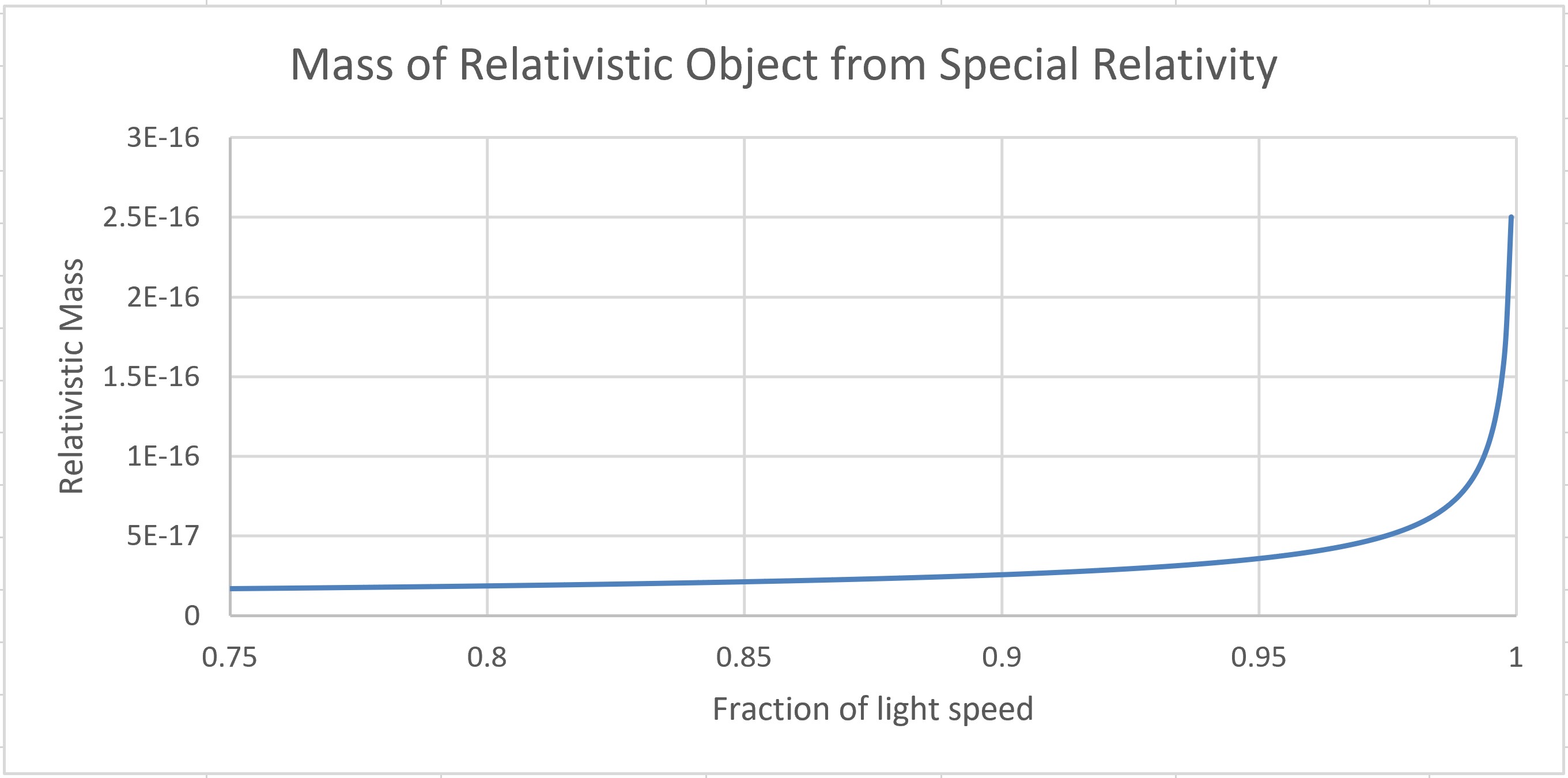We’ve presented convincing evidence that The New Physics solves several serious mysteries that have plagued physics over the past century. These are
- What causes gravity
- What causes inertia
- Why a particle is always a wave
- Why the Hydrogen nucleus is larger than the proton
- Why the Binding Energy curve is a sawtooth
- Why the free neutron disintegrates but the nuclear one doesn’t
But this next little bit of evidence is truly astounding.
In 1905 albert Einstein published his findings on what is now called the Theory of Special Relativity. As usual, we’ll explain everything.
This theory was “special” because it only applied, like Newton’s Laws of Motion, when there was no measurable gravitational field present. The theory was based on the idea−demonstrated by then recent experiments−that the speed of light in a vacuum is constant and independent of the speed of the observer.
If you follow this to its logical conclusion for objects travelling near the speed of light–called relativistic objects–it turns out that from the viewpoint of a stationary object:
- The length of the relativistic object in the direction of travel appears to be shorter
- The time on the relativistic object goes slower
- The mass of the relativistic object grows heavier
We’re not going to go through the math here, but it’s pretty easy to understand why relativistic objects get shorter. It comes from geometry of the situation between the observer and the object, and the time it takes light to reach the observer from the object. Extending this line of thinking a bit quickly leads to point 2. above, although at the time it was asserted by Einstein that clocks were slower on fast objects, it created a huge splash in physics.
Point 3, though, that the mass of a relativistic object approaches infinity as the object approaches the speed of light: this just sort of dropped out of the math but made no sense physically. You are saying in 1. that the relativistic object gets shorter, but in 3. that it gets heavier? So, it gets smaller but it gets heavier? WTF?
To see what this looks like, here is a graph of the growth in the mass of a relativistic object as it approaches the speed of light:

This curve is driven by the difference between the speed of the object and the speed of light. As the object approaches the speed of light in a vacuum, the ratio of the speed of the object to the speed of light approaches 1. If you subtract this ratio from 1, the difference approaches 0. If you divide the mass of the object by this difference, the result approaches infinity. This is effectively the curve above.
But since we know the object is actually getting shorter, it is still hard to understand why the object’s mass should increase like this as the object approaches the speed of light.
The New Physics provides an intuitive answer to this century-old question. Starting with The New Physics model of the proton, and given fact 1. above that the length of the item along the direction of travel shrinks, here is what is happening:

According to The New Physics, the gravitational acceleration that a proton generates depends on the ratio of its surface area to its volume. As the length shrinks in the direction of travel, the proton changes from a sphere to what is called an oblate spheroid. The surface area shrinks towards the combined area of the front and back circles, while the volume shrinks to 0. Here is the graph:

You are forgiven for thinking this curve looks just like the previous one, because point by point their ratio is a constant. Finally we have a physical explanation for why mass increases as an object’s speed increases.
We have been able to replicate the results of Special Relativity of mass, but using an entirely geometric approach. This provides important support for The New Physics model of the source of gravitation.